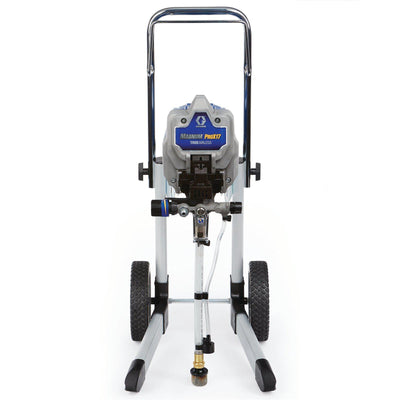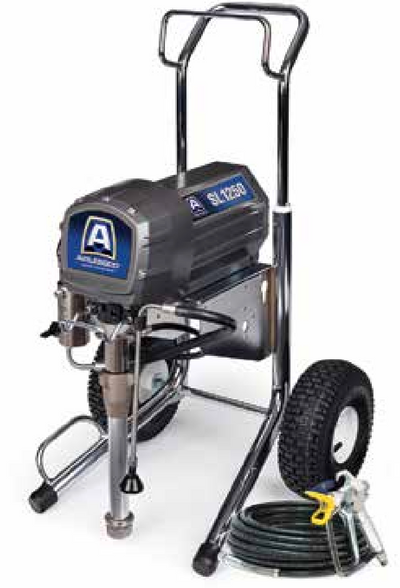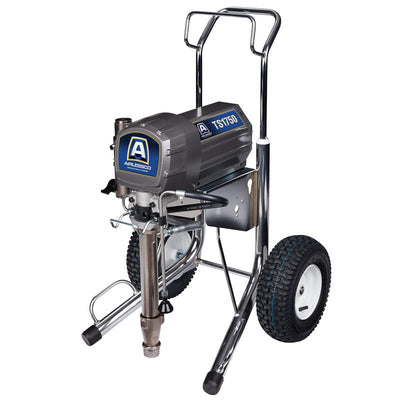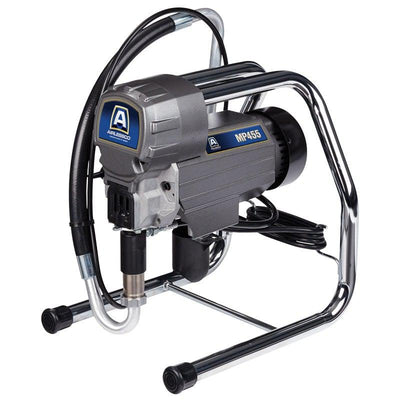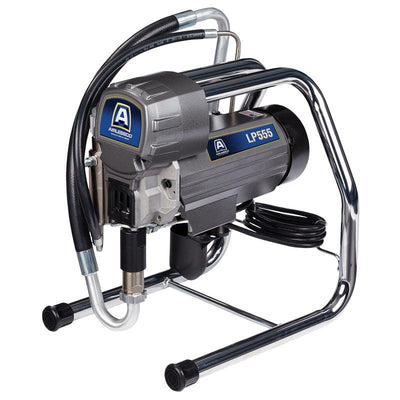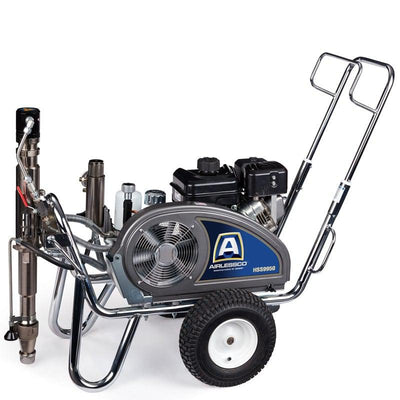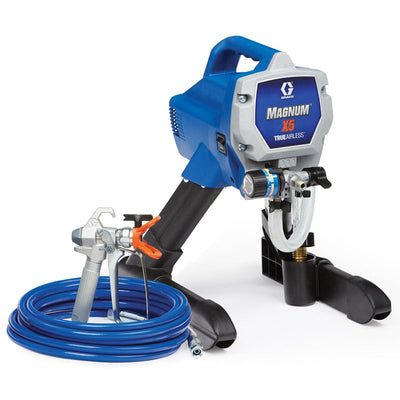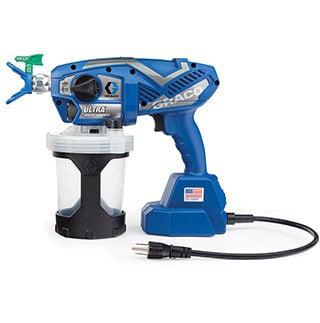Airless versus Air Assist Airless Paint Sprayers (Includes Video)
When it comes to higher production need, air assist airless and airless paint sprayers are two of the most common options that are considered. Both options have a variety of drawbacks and benefits that you should consider before making a decision to buy either. In this article we will cover the benefits and drawbacks of each type of sprayer so that you can make informed decision about which might be right for your spray application.
Airless paint sprayers
Pros
Airless paint sprayers like these from Graco or Titan are able to spray about any coating you would need to be able to with the exception of coatings with a very short pot life. They use higher pressures than air assist airless paint sprayers and because of this will break up very heavy bodied coatings like zinc and mastics . In contrast, air assist airless paint sprayers use lower pressures along with air to provide a breakup of the coating that might need to be sprayed. Since they use a lower pressure, the air assist airless paint sprayer will often not work with very heavy body coatings. In addition, airless paint sprayers are often offered in higher gallons per minute configurations than most air assist airless sprayers. This means that if you need to be able to support large fluid nozzles for multiple painters an airless will typically be more effective at providing the appropriate fluid volume. The higher pressure that an airless uses will also allow for material to be supplied over longer fluid lines, which is useful if you will be painting a significant distance away from your sprayer (like in bridge painting or other contracting related work).
Cons
While airless paint sprayers have a lot of advantages there are certain drawbacks as well. One particular downside to airless paint sprayer is you will typically not be able to achieve the quality of finish you can with an air assist airless paint sprayer. This is because an air assist airless paint sprayer uses fluid pressure and air being introduced into the fluid stream to atomize of coatings, while airless paint sprayer use only fluid pressure to atomize coatings. The end result is a better finish when using an air assist airless paint sprayer.
Another downside to airless paint sprayers is the efficiency that they apply coating the product surface. The efficiency that spray equipment applies coating to a product is called transfer efficiency and transfer efficiency determines the amount of paint that you potentially waste when spraying product.
In comparison to air assist airless airless paint sprayers, airless paint sprayers have a significantly lower transfer efficiency. When airless paint sprayer use you’ll typically achieve around 35% to 40% transfer efficiency, while air assist airless paint sprayers will often result in up to 65% transfer efficiencies. Practically speaking this means that the air assist airless paint sprayer will use approximately half as much paint for a given project that the airless paint sprayer uses.
Air assist airless paint sprayers
Pros
Air Assist airless paint sprayers also have a variety of benefits that are important to consider to better determine whether an air assist airless or airless sprayer will be better for your application. One of the biggest benefits to an air airless paint sprayer is the ability to provide a finer atomization of coatings. By adding assist air into the fluid stream you achieve a finer break up and finish than you usually will using an airless paint sprayer. This can be especially useful when you need a combination of production and a higher quality finish. In addition to a finer quality, air assist airless paint sprayers will waste less paint. This will ultimately be able to help keep your costs down by not having to buy as much paint for a given project.
Cons of air assist airless paint sprayers
While air assist airless paint sprayers have a lot of benefits, they also have drawbacks to. As mentioned, air assist airless paint sprayers typically will not come in high ratio pumps. This can create limitations in their ability to properly spray heavy body and high viscosity coatings. Additionally, air assist airless paint sprayers require an airline which can create an additional line to have to work with when spraying. In contrast airless paint sprayers only have one line that comes to the airless spray gun.
Another con of air assist airless paint sprayers is that the spray gun that they use is typically more expensive than an airless. The cost difference of the spray gun is mostly due to using atomization air which requires additional manufacturing and design considerations.
Common applications for airless and air assist airless paint sprayers
Airless Paint Sprayer Application
Airless paint sprayers are one of the most common options for the majority of general contracting work including painting new residential construction, painting bridges, and painting other large outdoor structures
Common Air Assist Airless Applications
Industrial painting where quality of finish is a high priority, woodworking where you are spraying a larger surface and want to maintain a finish similar to what you get with a spray gun, and in larger painting projects like heavy equipment where you want production but also a quality finish.
Final Thoughts
Buying an airless or air assist airless paint sprayer is a significant investment. To ensure you make the right choice it is important to consider your goals when spraying. If you need further help let us know and will give you some options.

